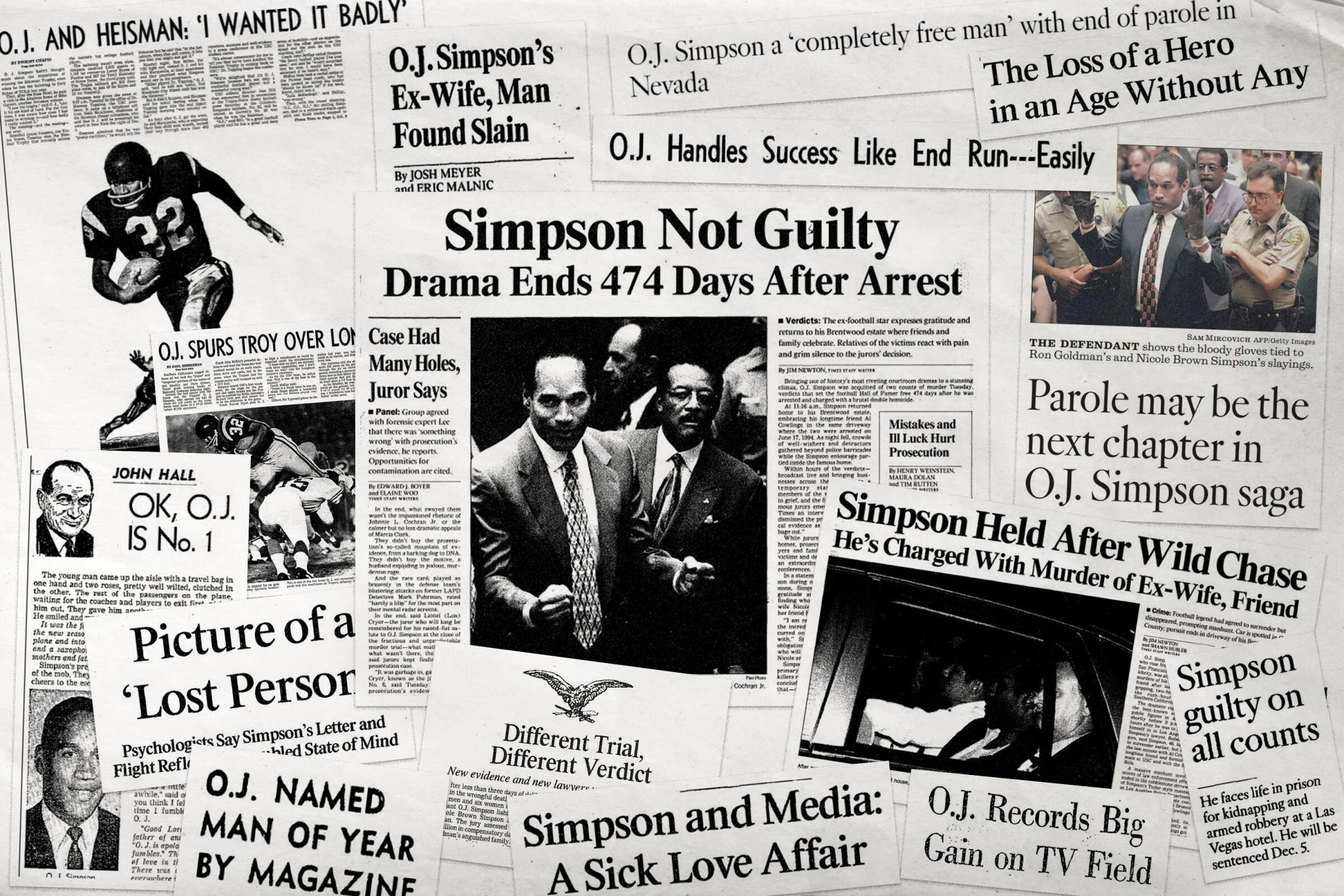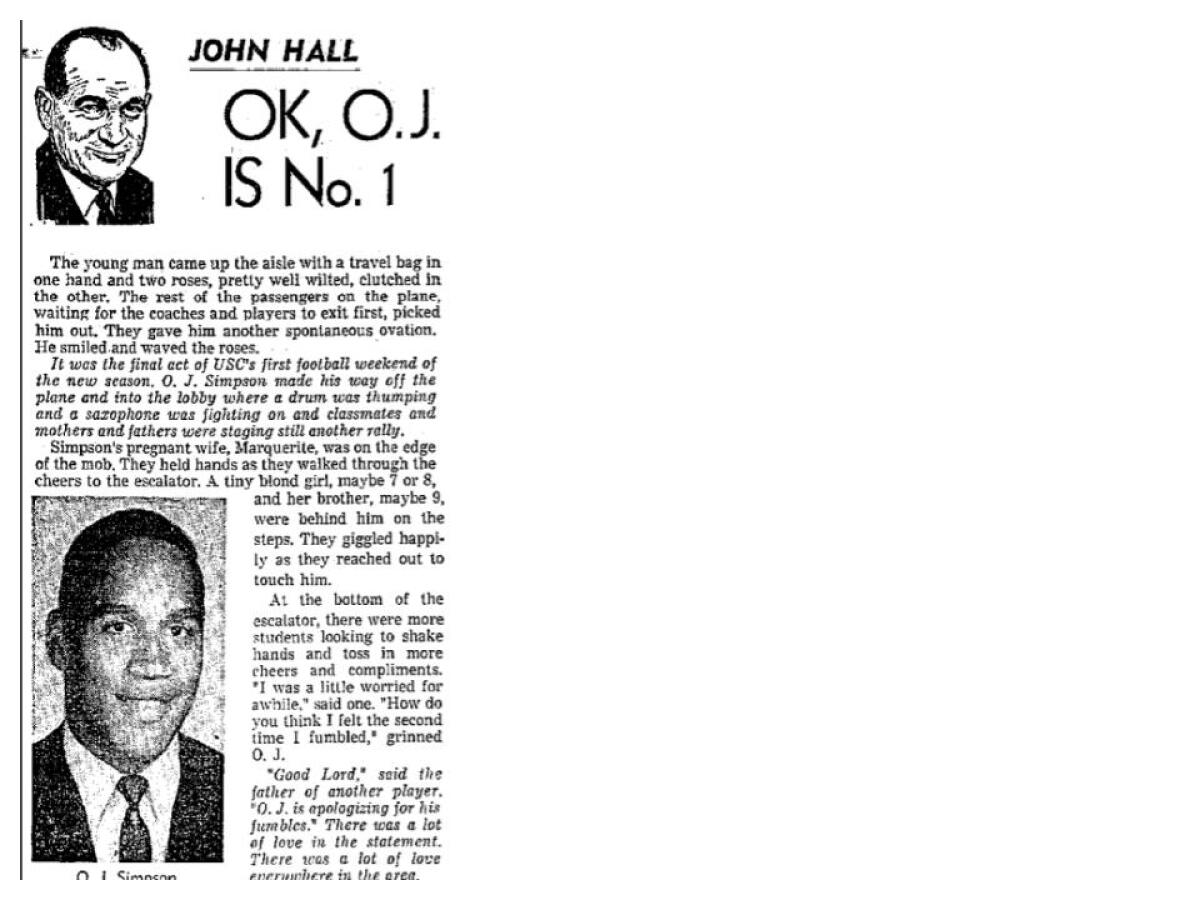David Wharton has filled an array of roles – covering the courts, entertainment, sports and the second Persian Gulf War – since starting as a Los Angeles Times intern in 1982. His work has been honored by organizations such as the Society for Features Journalism and Associated Press Sports Editors and has been anthologized in “Best American Sports Writing.” He has also been nominated for an Emmy and has written two books, including “Conquest,” an inside look at USC football during the Pete Carroll era.
1
For better or worse, O.J. Simpson was a quintessential L.A. creation. It made sense that this man who craved fame spent most of his years in a city built on celebrity. The media here, in all its forms, eagerly chronicled his dizzying narrative arc, from star athlete to television personality, from murder defendant to prison inmate, and, finally, sad meme.
That infamous slow-speed pursuit in the white Bronco has been credited with changing the media landscape, arguably giving rise to reality television and a new period of celebrity-driven news. It introduced a nation of viewers to viewing legal proceedings as television drama. If Simpson was the architect of his own downfall, the media was an eager spectator.
His was a life lived in headlines.
2
1967
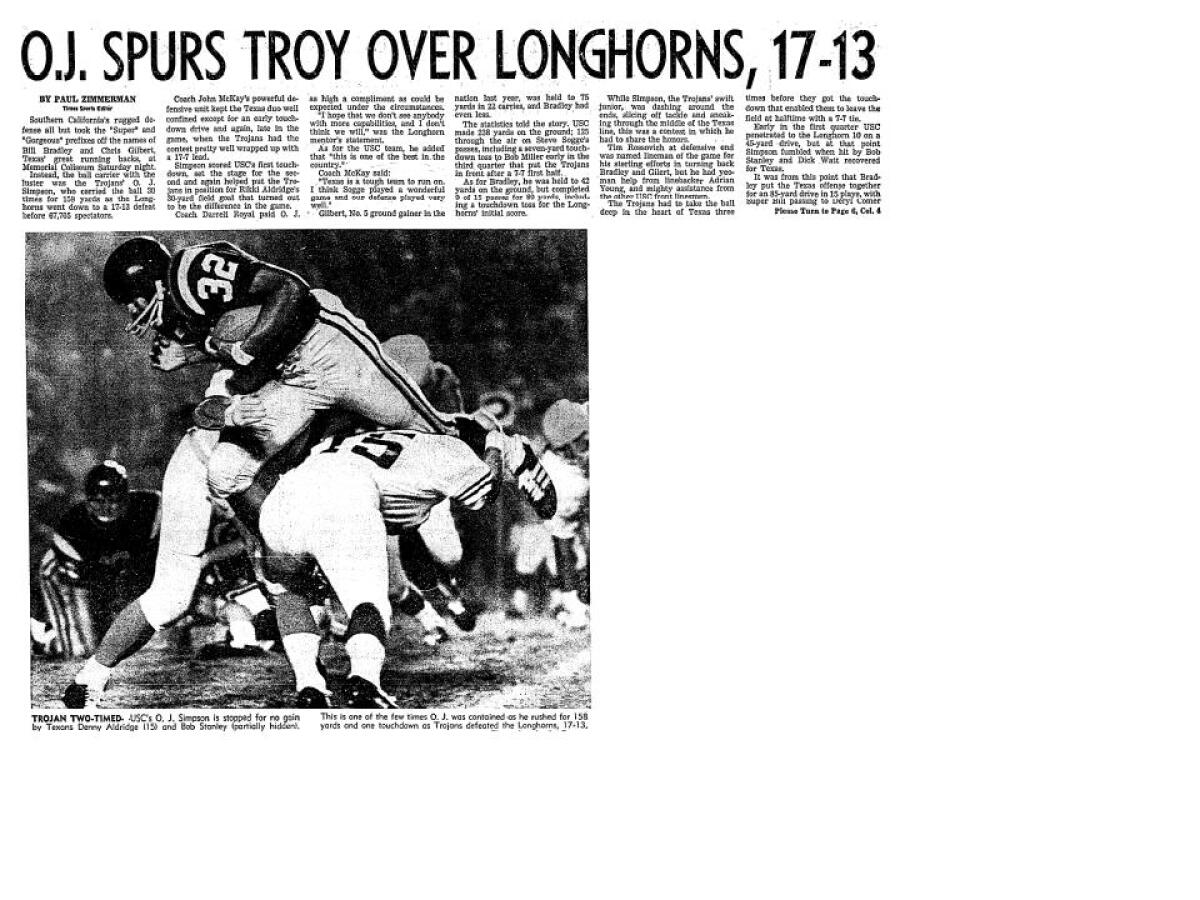
In the fall of 1967, the new USC tailback — a transfer from San Francisco City College — wasn’t quite a star yet. His first headline in The Times was accompanied by a photo of him hurdling tacklers.
3
1968
By the following year, Simpson was a known quantity. Times columnist John Hall wrote: “He is a giant in athletic ability and, more important, he is a giant in conduct, understanding, warmth and modesty.”
4
1968
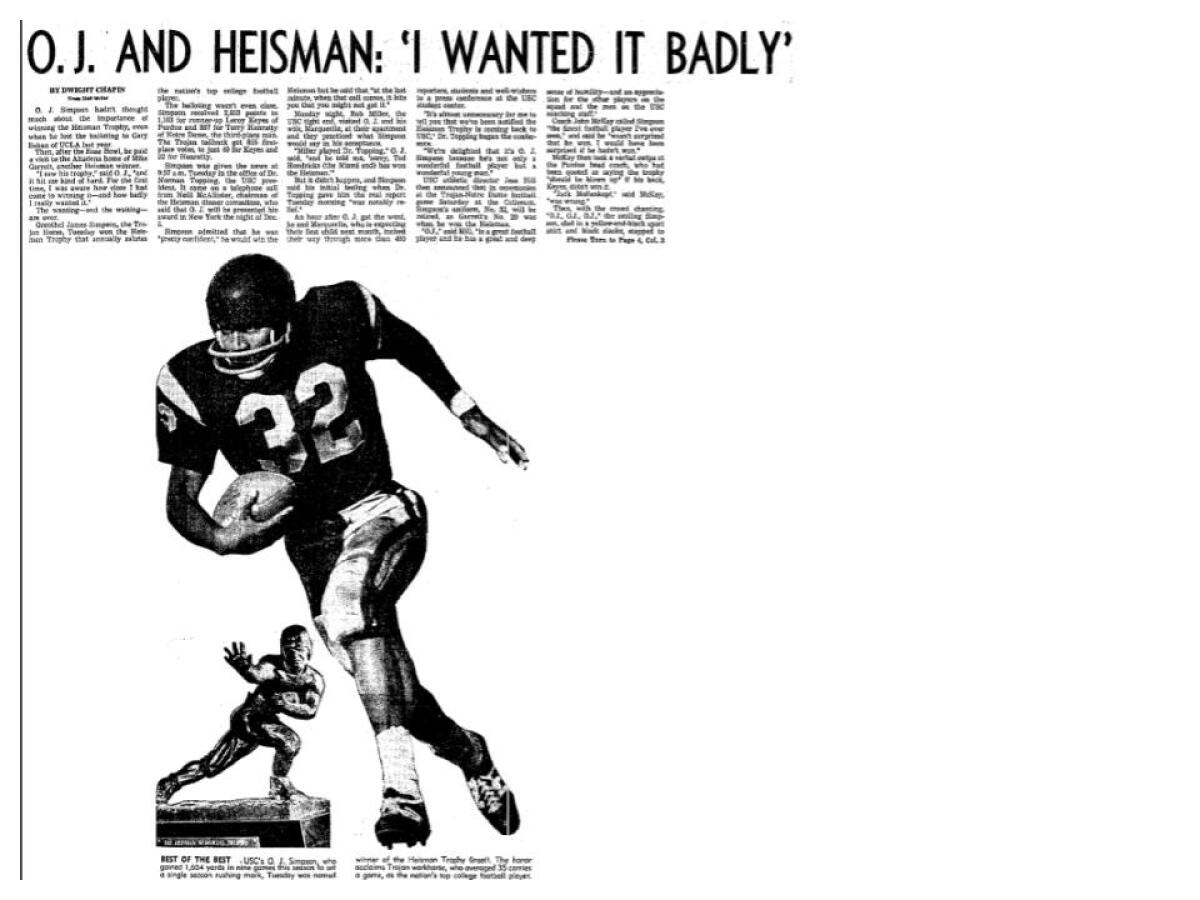
A large action photo dominated the cover of the Sports section. After finishing second as a junior, Simpson won the coveted Heisman Trophy as a senior, his biggest moment yet on the national stage.
5
1969

No, it wasn’t Time magazine. But sports fans across the country knew Simpson, and Sport Magazine chose him over the likes of Joe Frazier, Arthur Ashe, Kareem Abdul-Jabbar and Bill Russell.
6
1969

Barely out of college, Simpson saw himself as more than an just athlete. The Times followed him on a promotional tour where he spoke to a civic leaders event, saying: “I believe we must walk the middle of the road on the race issues … not be too militant or too conservative.”
7
1969

Soon after Simpson left for Buffalo and the NFL, Hollywood called him back for a guest spot on the CBS series “Medical Center.” This was big enough news in L.A. to warrant coverage beyond the usual mention in industry trades.
8
1973

Pro football would not be easy for Simpson, who spent most of his career with the downtrodden Buffalo Bills, reaching the playoffs just once. But in 1973 he broke the league’s preeminent record.
9
1994
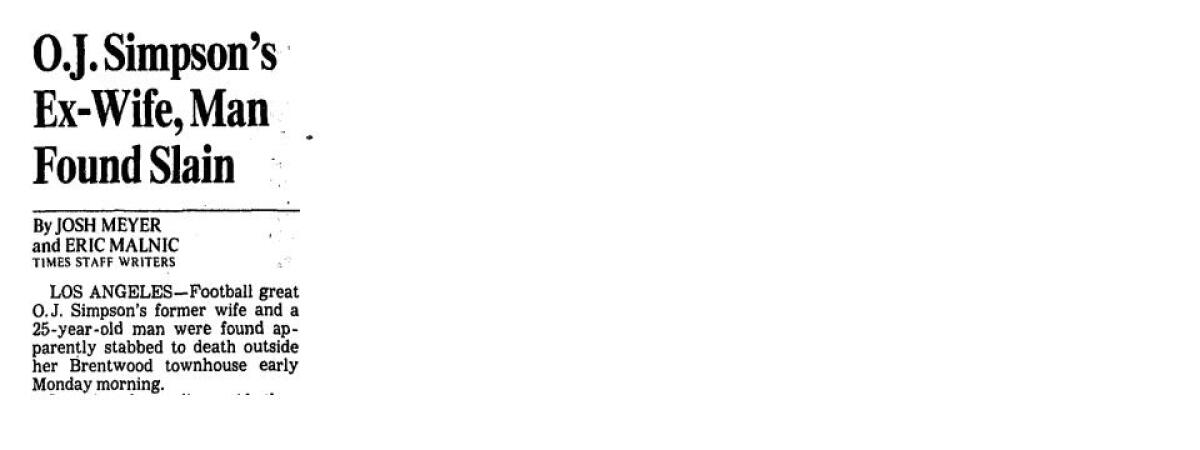
The news of the violent deaths of Nicole Brown Simpson and Ronald L. Goldman came as a shock. If anything, Simpson’s star shone even brighter after football with steady work as a sportscaster, a commercial pitchman — darting across airports — and roles in films such as “The Towering Inferno” and “The Naked Gun.” Being accused of a double murder did not jibe with the smiling face on screen.
10
1994

For hours, news helicopters circled over a surreal scene, a car chase traversing Southern California freeways in slow-motion. Television coverage showed crowds gathered along the route chanting “Go, O.J., go!” and holding up signs that read “Save the Juice.” Nationwide, an estimated 95 million watched on television — not even the Super Bowl drew such a big audience that year.
11
1994
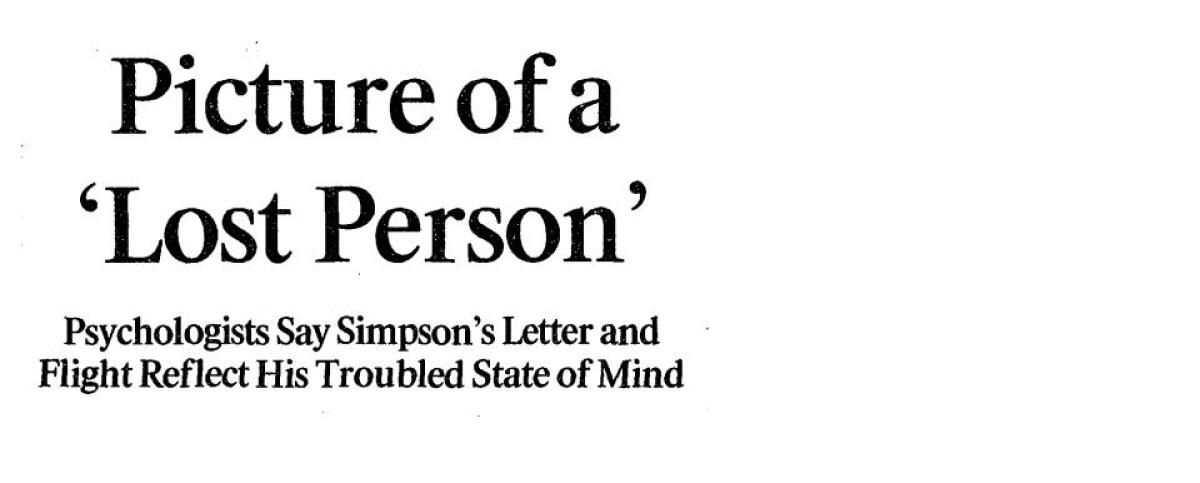
The ground had shifted under Simpson’s feet, the media no longer treating him as a favored son. The Times quoted mental-health experts scrutinizing every word of a letter he wrote and made public on the day of his flight. It read like a suicide note or, as one psychologist said, a “goodbye to the life of a superhero.”
12
1994
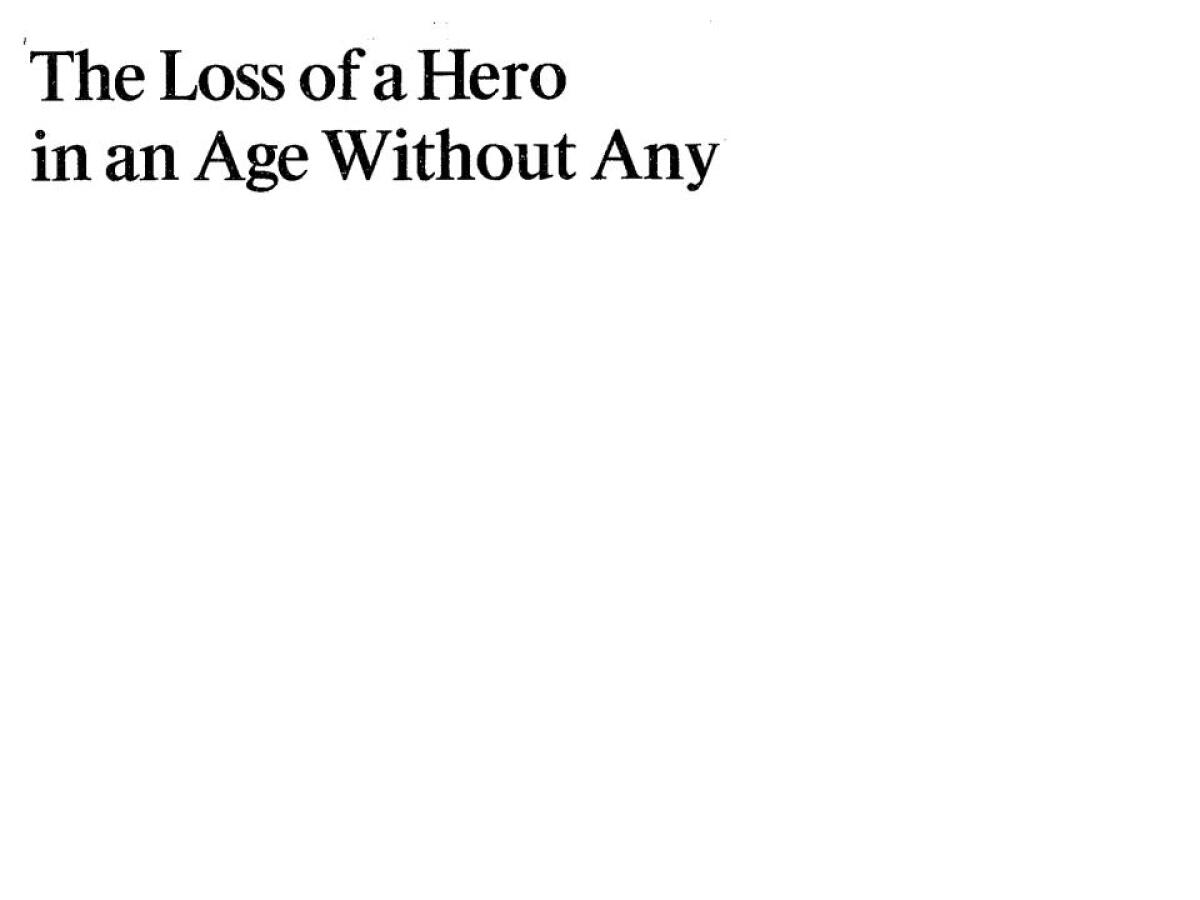
This wasn’t the sort of fame Simpson envisioned. He had become a flashpoint for debates over racial and economic divisions. He had stumbled into the morbid curiosity with celebrities and crime. Author Neal Gabler wrote: “We hurt not only for what he allegedly did to his victims but for what he has done to us … why do those heroes we do have always seem poised on the precipice of their own demise?”
13
1995
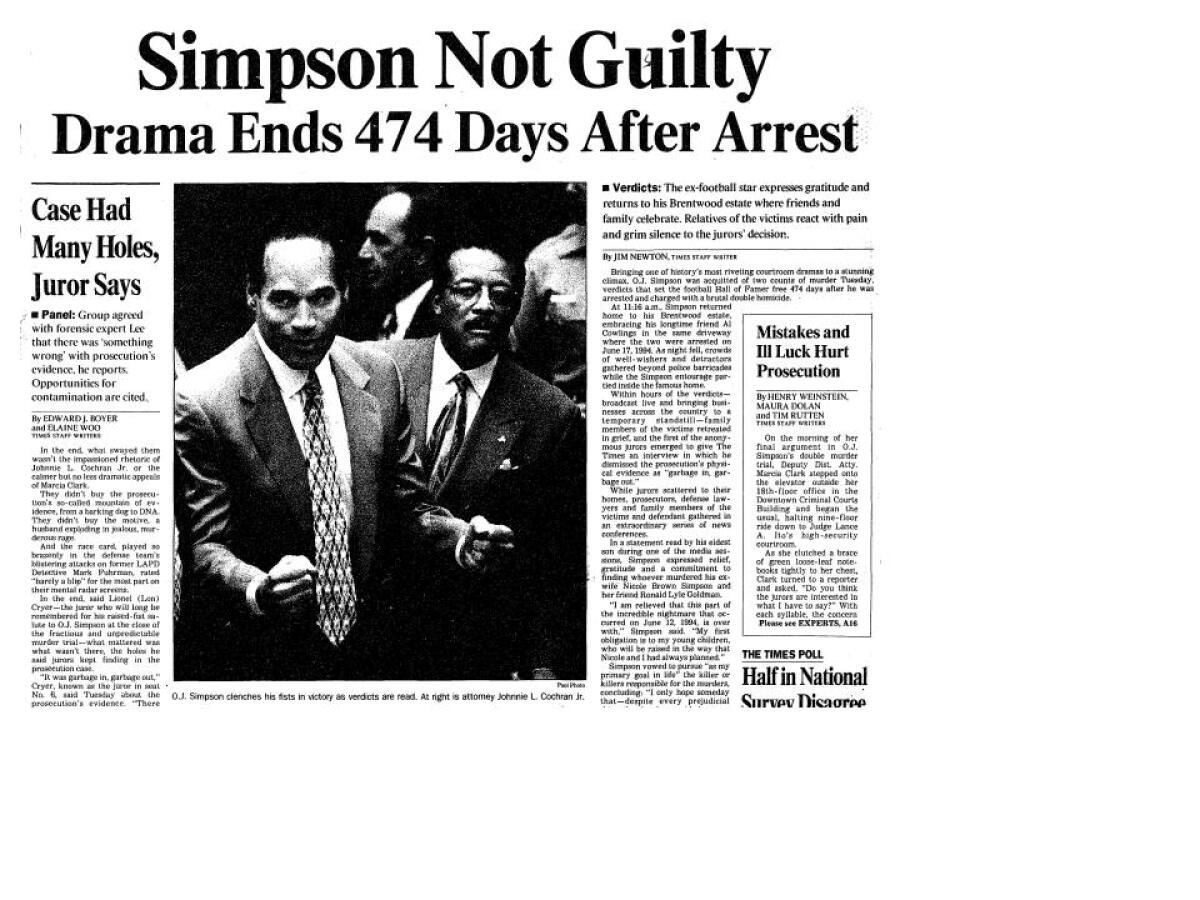
The trial was more than jurisprudence — it was theater with a cast of characters led by Judge Lance Ito, defense attorney Johnnie Cochran Jr. and Det. Mark Fuhrman. There was the glove, the LAPD and the DNA. The Times published a rare “extra” edition to announce a stunning verdict: Jurors had acquitted Simpson of two counts of murder.
14
1996
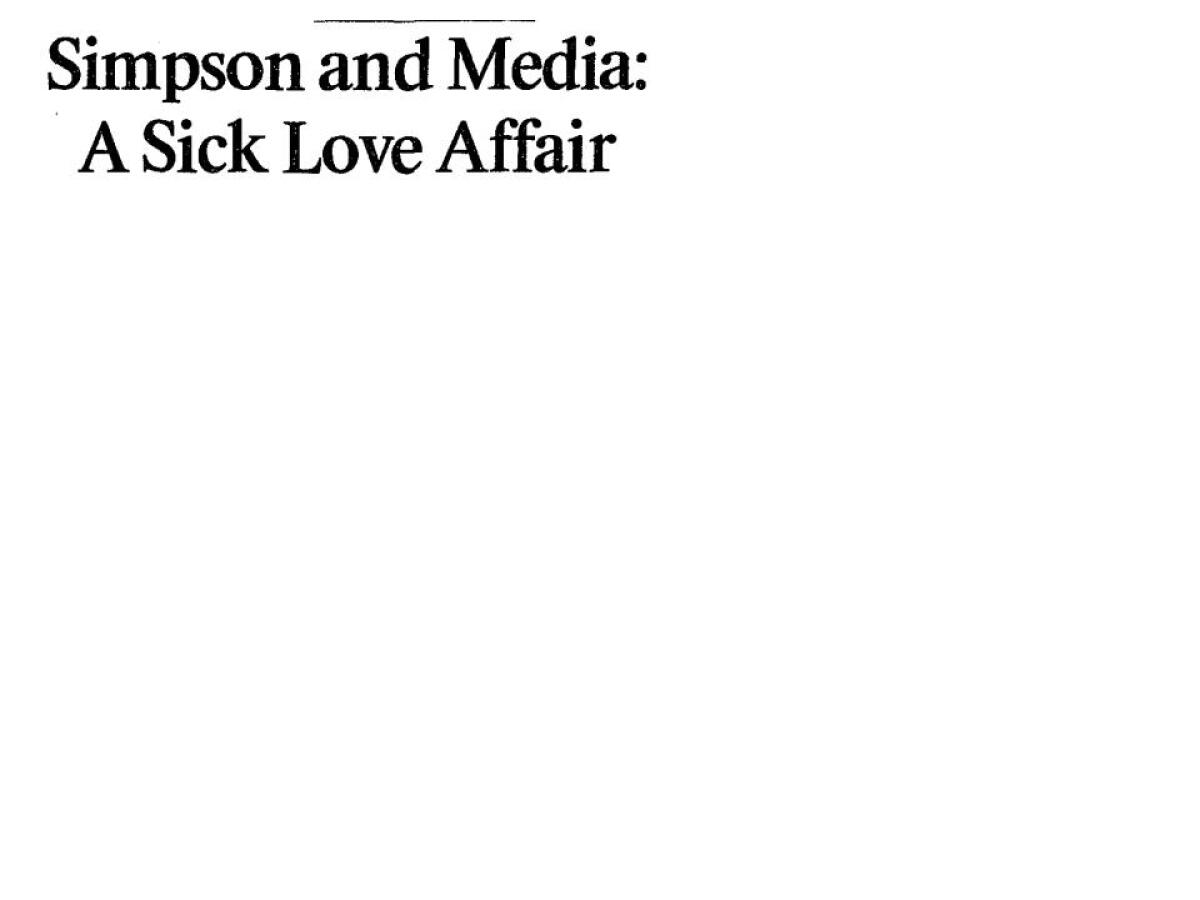
Far from shying away, Simpson spent months after his acquittal seeking out television, radio and newspaper interviews, often calling unannounced to pitch his book and a video. He told a reporter: “Maybe I’m a little cocky but in my heart I feel I can have a conversation with anyone.”
15
1997

When the victims’ families filed a wrongful-death suit, Simpson faced new evidence and was obliged to testify. News coverage reflected a growing — though hardly universal — sentiment that this trial could be payback for the criminal acquittal. A mostly white jury deliberated less than three days before finding Simpson liable for the murders.
16
2008
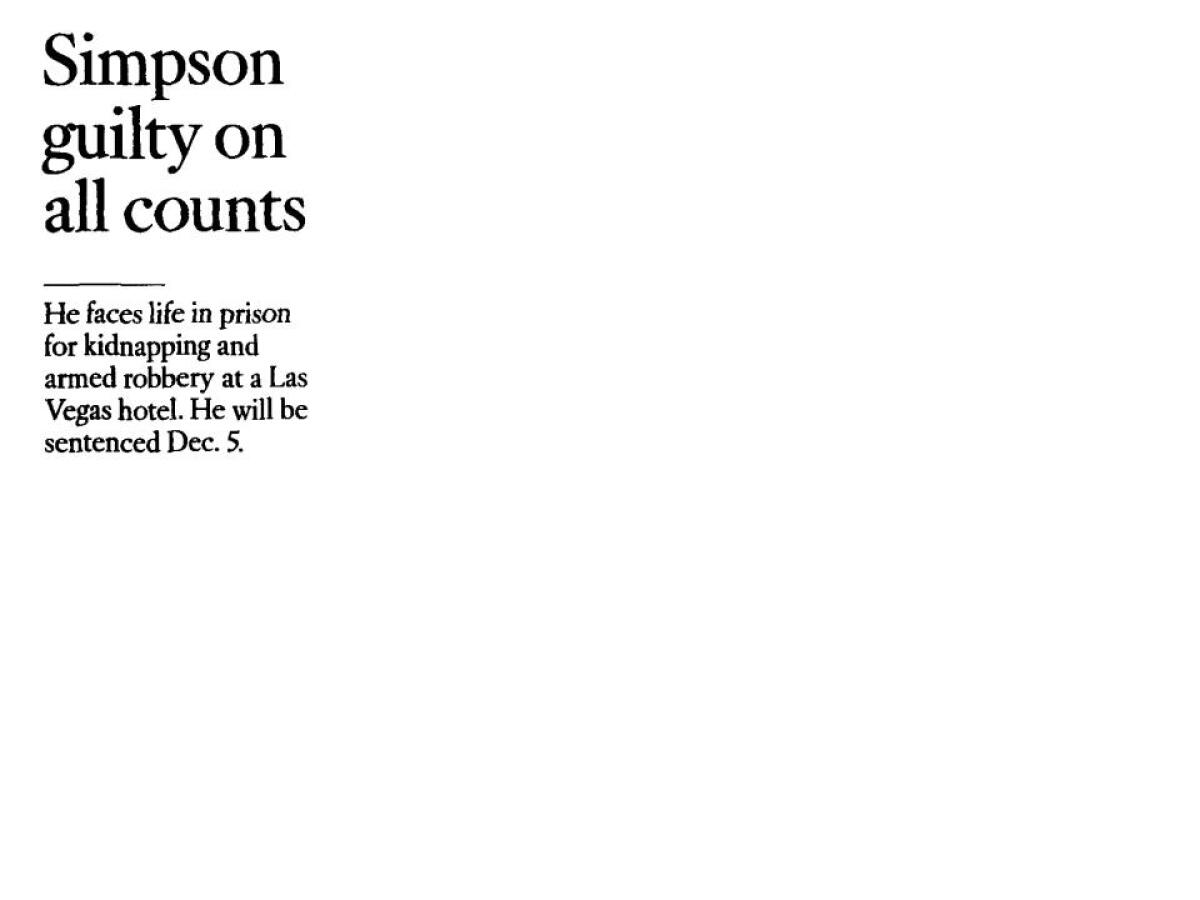
Years after the civil suit, still facing a $33.5-million judgment, Simpson accosted two sports collectibles dealers in their Las Vegas hotel room. He said he was recovering stolen items. A jury said it was robbery. The sentence? Up to 33 years in prison.
17
2017
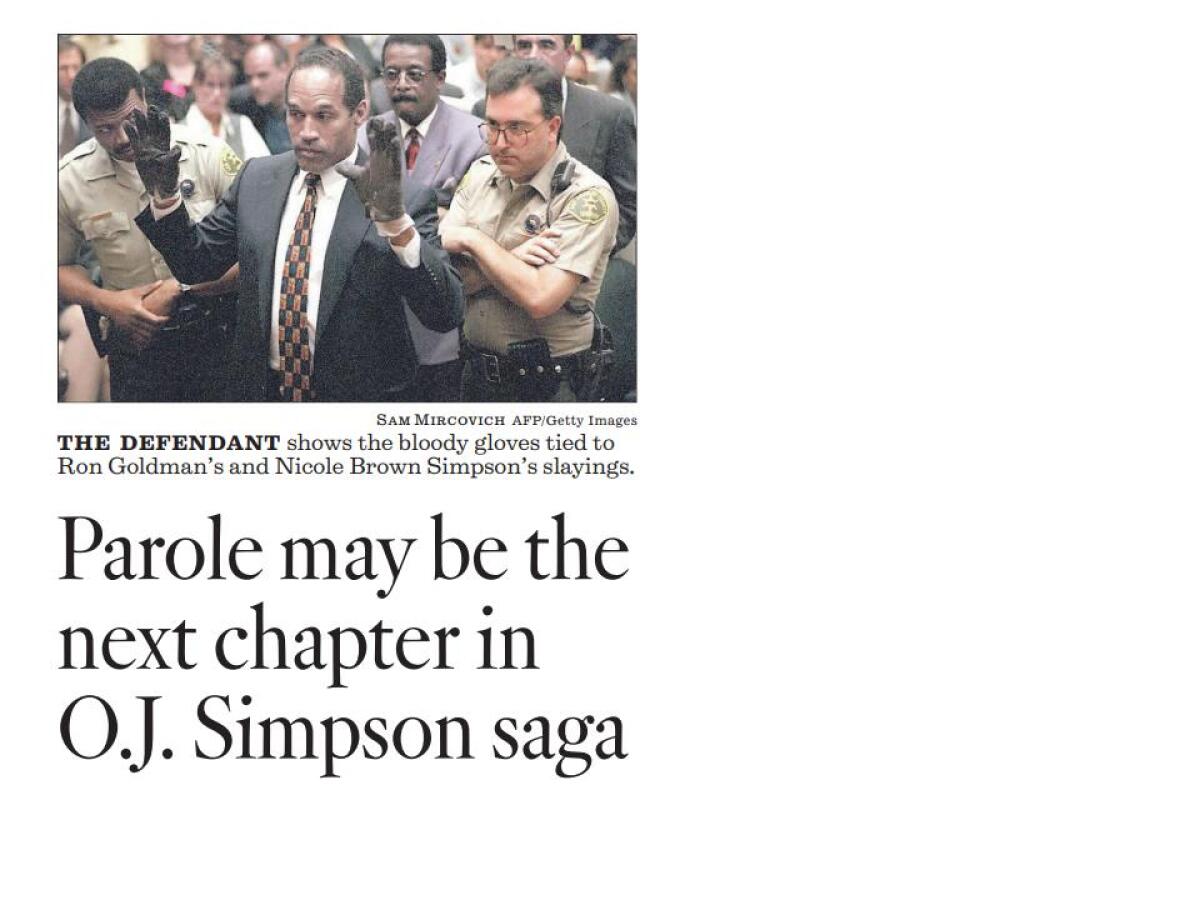
During a Nevada parole board hearing, it was suggested that Simpson might pursue a webcast or a blog after leaving prison. He shook his head. For the first time, it seemed, he wasn’t interested in notoriety. The board granted him parole.
18
2024
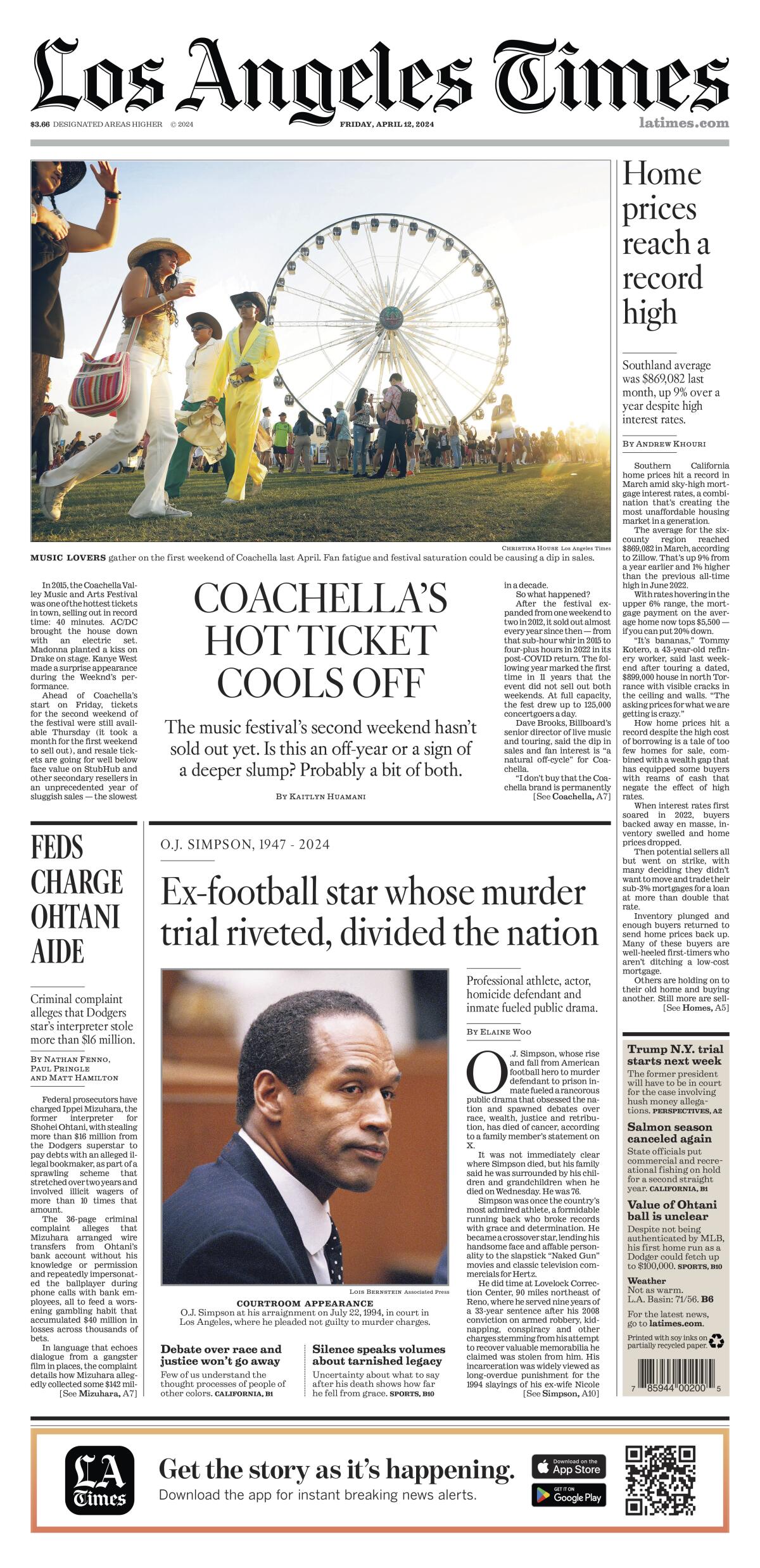
In the past four years, Simpson’s name appeared in The Times just once, briefly mentioned in a 2022 story about USC quarterback Caleb Williams winning the Heisman. Not that Simpson had gone completely underground — he still popped up on social media occasionally — but most people didn’t even know he had cancer. His final days were spent mostly outside the spotlight.
